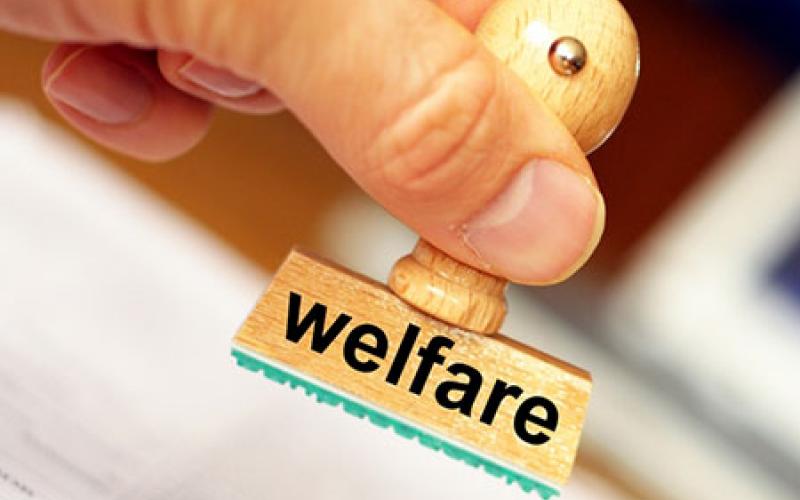Can states’ welfare programs be indicators of environmental injustices?

Can states' welfare programs be indicators of environmental injustices?
A recent study found correlations between state welfare programs and enforcement of environmental regulations. The author contends that the generousness of welfare programs is a signifier for whether African Americans are viewed as "deserving" of government assistance and benefits, attitudes that translate to better or worse monitoring of polluting facilities and enforcement of environmental regulations.
Original Paper:
Liang, Jiaqi (2015) "The Shadow of the Politics of Deservedness? The Implications of Group-Centric Policy Context for Environmental Policy Implementation Inequalities in the United States." Journal of Public Administration Research and Theory Advance Access¯ DOI: http://dx.doi.org/10.1093/jopart/muv027
Environmentalists often lament the shortcomings of regulations that are intended to protect the environment. In particular, enforcement of regulations is often considered costly in terms of time and resources. For example, communities all over the U.S. still face health problems related to water pollution despite strong environmental regulations that protect water quality. This is often due to a lack of monitoring and enforcement activities targeting polluters. Many researchers have shown that communities of color tend to suffer from greater exposure to environmental risks and harms than white communities. Most of this research focuses on the placement of polluting entities such as waste treatment plants and other industrial facilities. Little research has focused on the effects of differential enforcement of environmental regulations.
Research published in theJournal of Public Administration Research and Theory by Jiaqi Liang from New Mexico State University takes a novel approach to correlating group-centric public policies (i.e. welfare) with enforcement levels of environmental regulation. The research builds on studies showing that communities of color are disproportionately burdened by environmental risks and harms when compared with white communities in the U.S. Instead of showing again that polluting facilities are disproportionately placed near communities of color, the research links inequality of regulatory monitoring and enforcement and states' welfare policies.
This study used statistical models to correlate state welfare programs and enforcement of environmental regulations. The author identified vulnerable communities by looking at race, ethnic, and economic data at the county level. The primary focus was on African American communities. In order to compare monitoring and enforcement levels of environmental regulations, the study looked at the number of inspections and the number of punitive actions taken against violations. Then state welfare policies were considered in terms of the stringency of their requirements and restrictions as well as the level of benefits provided to individuals.
The most significant finding was that there was a large increase in environmental inspection activities in predominantly black communities where states had more generous welfare benefits, all else equal. This implies that in a policy environment (or context) that is more favorable to African Americans, there was more enforcement of environmental regulations and more generous welfare programs. In other words, where there were relatively generous welfare programs, African Americans were less likely to suffer as much from negative racial stereotypes associated with welfare and were more likely to be considered "deserving" of government assistance and benefits. This was reflected by the increased monitoring and enforcement of environmental regulation around these communities.
The author identifies states' welfare programs as an indicator for a negative policy environment towards people of color. Put simply, the author asserts that programs that are very restrictive and offer few benefits reflect a policy-making environment that views people of color, the biggest group of welfare users, as undeserving of assistance. Programs that are less stringent and give more benefits indicate a more favorable policy-making environment for people of color. One way to understand this is to consider the way that policies are designed to target certain groups of people. Welfare programs target people with low or no income and, some argue, also implicitly target people of color, especially African Americans. It is also argued by some that African Americans' use of welfare assistance has often been strongly accompanied by negative stereotypes of them as lazy and undeserving of help. This leads to a perpetual cycle of structural and institutionalized racism where African Americans need the most help from the government but at the same time are consistently discriminated against by policies that reflect the view that they don't deserve help.
These findings send a strong message that structural racism still exists in the U.S. It shows up in the ways that entire groups of people are deemed "undeserving" or "deserving" of government assistance and protection. These attitudes have been institutionalized through public policies (e.g. welfare programs) and reinforced through the selective implementation of protective policies (i.e. environmental regulations). As a result, people of color face an unequal share of environmental and health risks that are perpetuated by public policies. People and the environment suffer because of these injustices.




